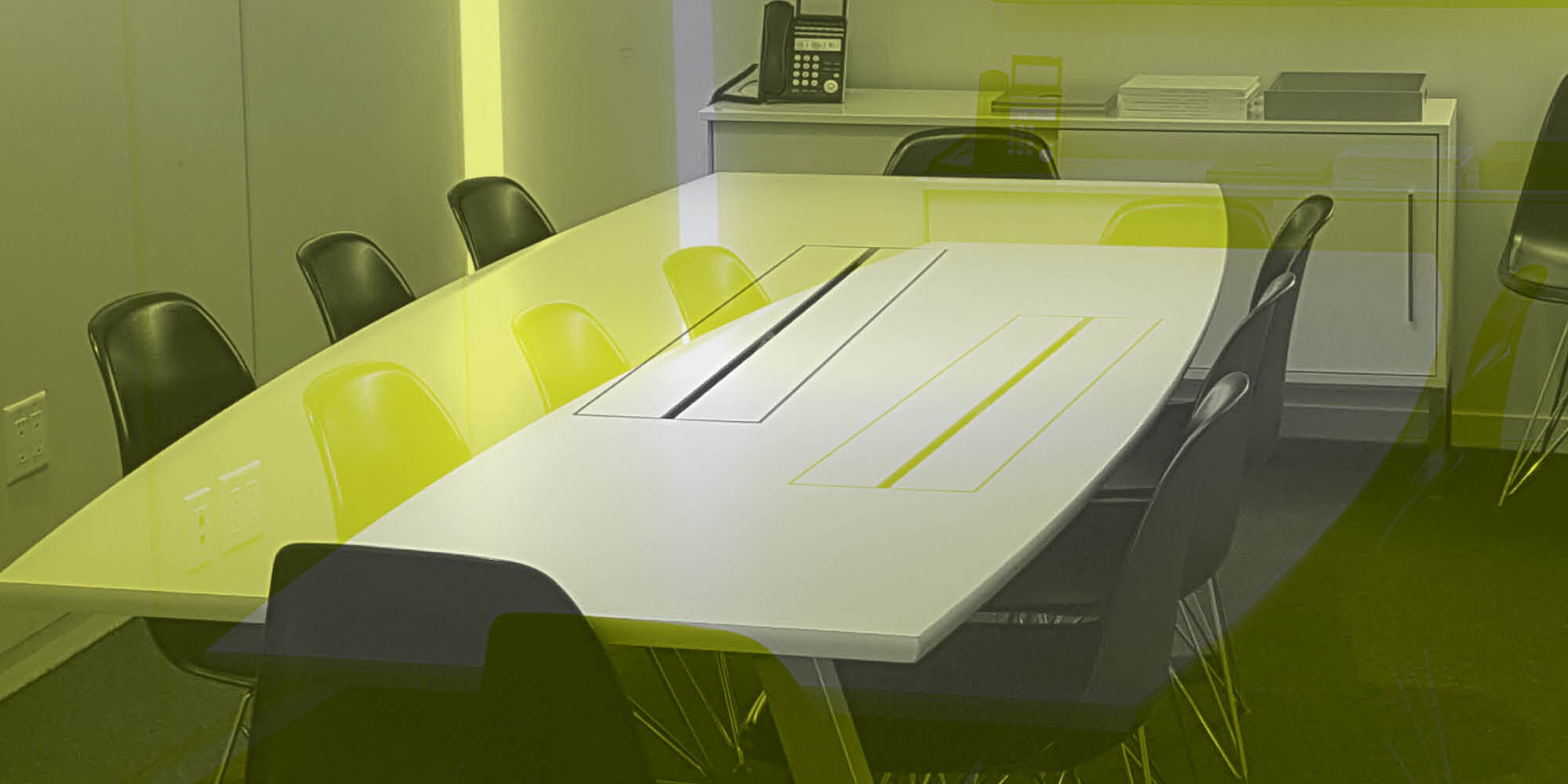How I Learned to Stop Worrying and Love the Room
I am often asked by designers and colleagues how it is that I love going into first meetings or pitch situations. I find designers experience a massive amount of anxiety on that first face-to-face — they self-impose pressure. I understand why.

These meetings are the epitome of making a good first impression. It’s the moment where you can win or lose a potential project. In the case of graduates, it is the place that they may, or may not, start their career. It’s probably the single most pressure-filled interaction in starting a working relationship. However, when you walk in to the room to meet a new group, first and foremost it’s about relationship building.
I do love these rooms. I think about them a lot, especially before I walk in. I think about who will be in the room. I always take the time to find out who I will be presenting to, and what the presentation will mean to those people. Of course it’s important to be prepared, but if I haven’t considered who the potential clients are at the table, their roles, and what they might want to achieve, that lessens my ability to connect. That may seem basic, but I do think that designers are a great example of trying to impress with our “expertise.” We sometimes try to show how shiny and nice we are before sitting down and really assessing who the client is, as a person. Sure, this sounds like an easier-said-than-done scenario for a first meeting, but I find that a client will open up if they feel like they have been considered as a true partner.
I was once in a first meeting where I walked into the room in a terrible mood. I had experienced a really bad morning. The clients and I greeted each other and they asked me, in a very Canadian way, “How are you today?” I made the choice of candidly saying, “Actually, I just had the shitiest morning!” There was a moment of silence, then the group broke out in smiles and laughter. “Been there!” was echoed, and I realized without much effort, or forethought, that I had made a real human connection. It had nothing to do with my strategy for the pitch, my typographic prowess, or my digital branding experience. It was that I was someone who was like them.
We were once lucky enough to interview a panel member about the pitch we made and subsequently lost. We always ask for post-mortems, but in this case the panel member was a friend of the studio and we got deep access to how we looked from the other side. There were a few technical insights — who spoke when, what case studies were shown — but the biggest comment was that we lost out to a company that came in and “owned the room.” I then became obsessed with this phrase. What does it mean to “own the room?” How do you go about doing that? One of my favourite “Own the Room” stories happened to Barb. She was meeting a new client and was led to the boardroom where she waited. The door opened and the client walked in. He said nothing, and from his jacket pocket produced a five-dollar bill. He then proceeded to rip up the bill (pre-polymer, obviously) and then threw it on the table. He looked at Barb and said “Now you will never forget this meeting.” Obviously, we haven’t.
Over time however, I have since come to dislike the phrase “own the room.” It feels to me somewhat adversarial. It has an us-vs-them connotation. It feels too aggressive. However, what I was interested in came out of my thinking around owning a room. How can I feel comfortable owning a room? Over time, I’ve changed this to “engaging the room.” How do I do this? I don’t have the answers to all of the following questions but I think about them all the time. How do you honour each of the participants in that first meeting? How do you connect at a one-on-one level with a group of strangers? How do you say meaningful things? How do you display humility? These questions mean something different every time I ask them because every pitch and every participant is different. I love thinking about these questions. I have realized over time that I really like people and their stories. One of the first meetings Hambly & Woolley had for a new project came down to the client asking, “What makes you different from the other design studio I am considering?” There was a thoughtful moment, but very quickly Bob answered, “Our office is closer to you than theirs!” A Hail Mary pass for sure. That one moment of humour, however, showed the client that H&W was a company that was made up of people, not just designers, that they might want to spend their valuable time and budget with. Also, our studio REALLY was closer than the other one.